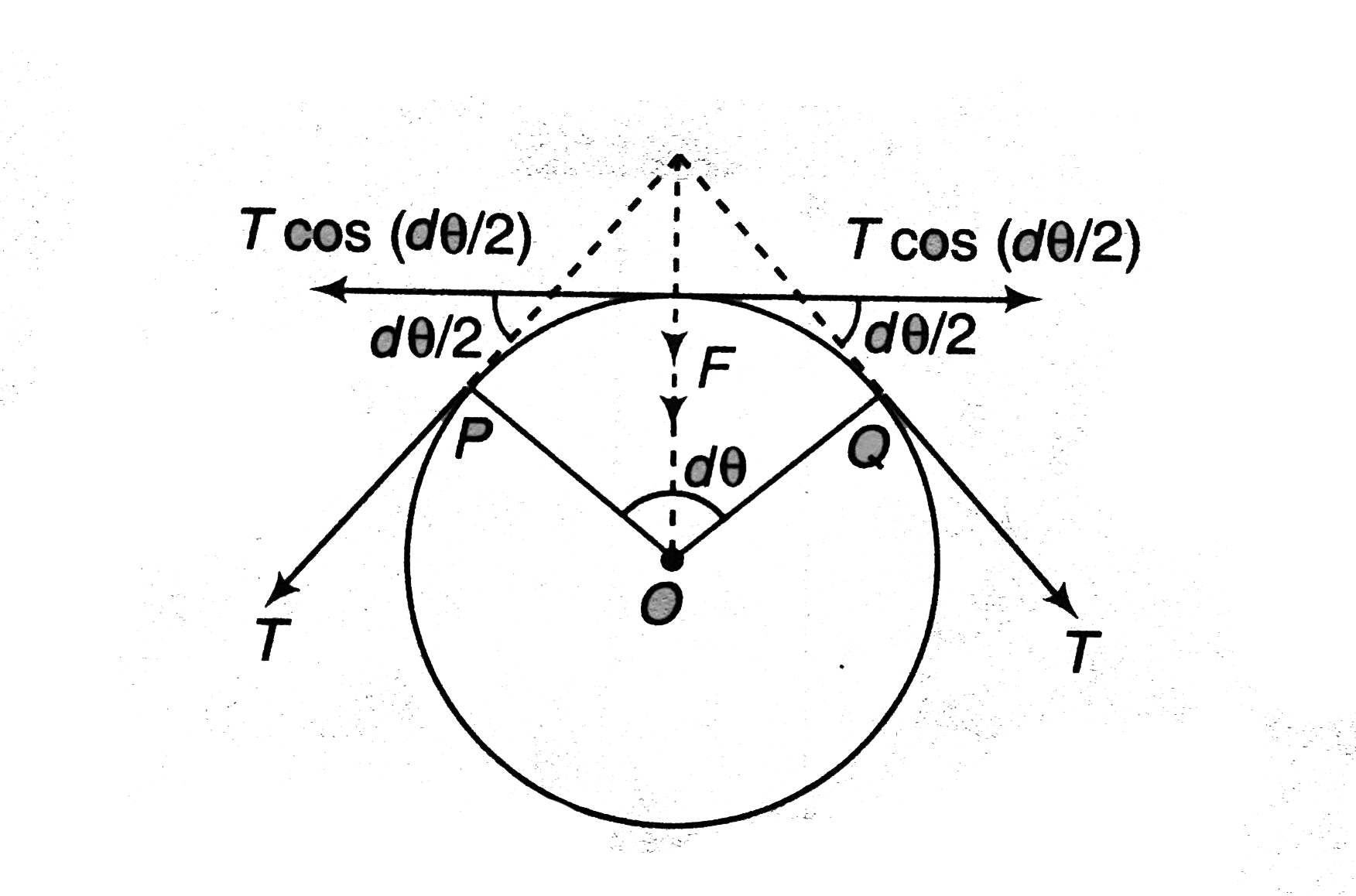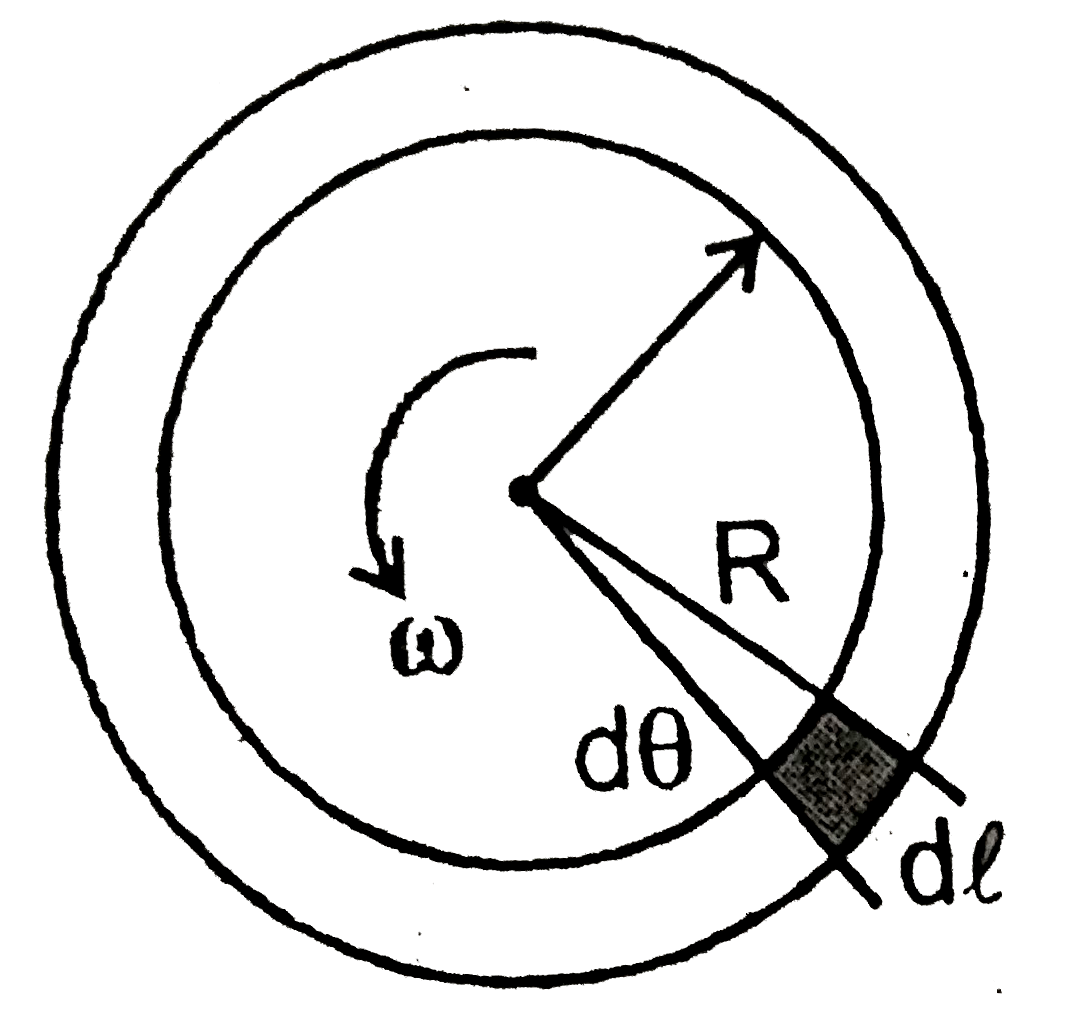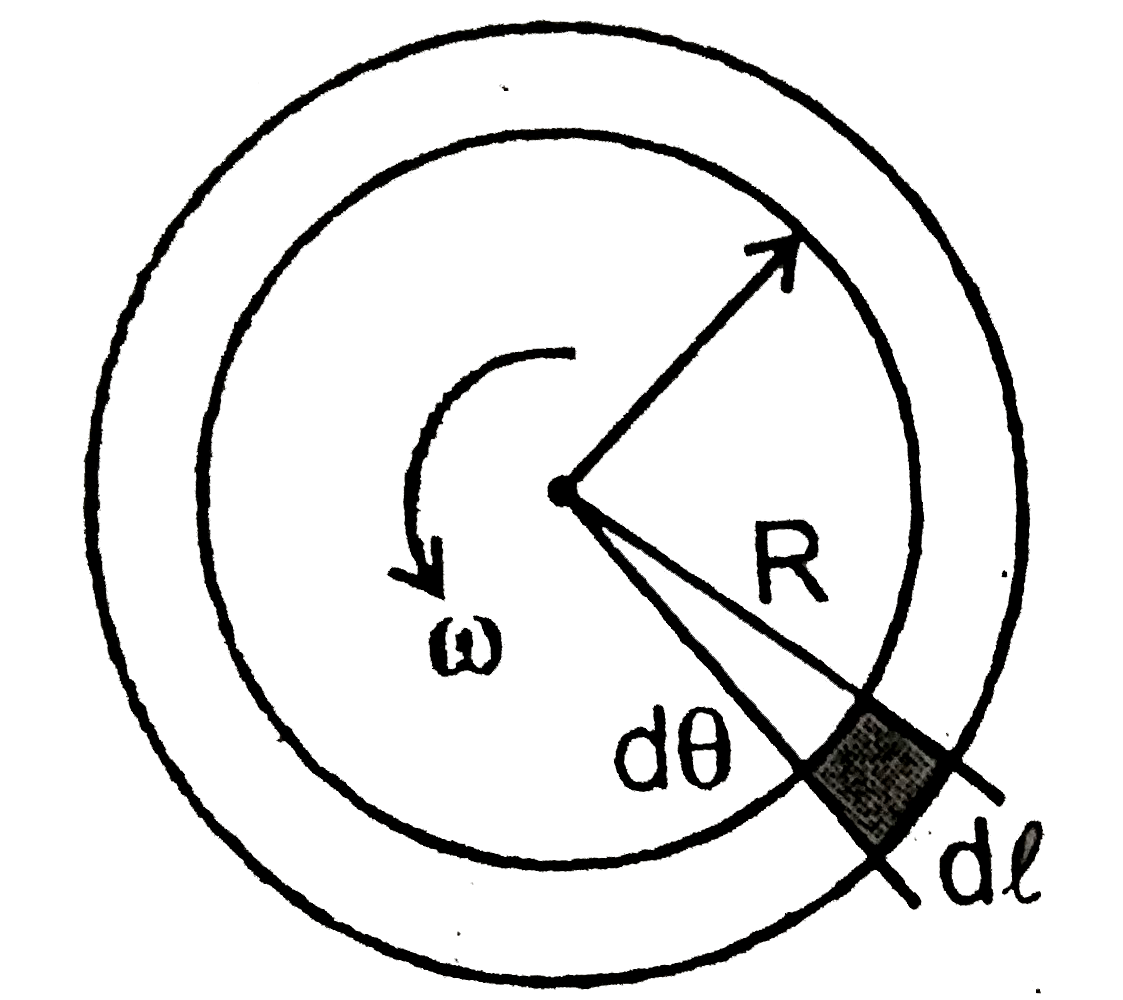A thin ring of radius R is made of a material of density ρand Young's modulus Y. If the ring is rotated about its centre in its own plane with angular velocity omega , find the small increases in its radius.
Consider an element PQ of length dl. Let T be the tension and A the area of cross-section of the wire .
Mass of element dm=volume×density
=A(dl)ρ
The component of T, towards the centre provides the necessary centripetal force to portion PQ.
∴F=2Tsin(dθ2)=(dm)Rω2
For small angles sin(dθ)2=dθ2=dl/R2
or d theta =dlR
Substituting in Eq. (i), we have
T.dlR=A(dl)ρRω2
or T=Aρω2R2
Let ΔR be the increase in radius.
Longitudinal strain =Δll=Δ(2πR)2πR=ΔRR
Now, Y=T/AΔR/R
∴ΔR=TRAY
=(Aρω2R2)RAY
or ΔR=ρω2R3Y

Topper's Solved these Questions
- ELASTICITYBOOK - DC PANDEYCHAPTER - ELASTICITYEXERCISE - Exercise 15.1
4 Videos
- ELASTICITYBOOK - DC PANDEYCHAPTER - ELASTICITYEXERCISE - Exercise 15.2
2 Videos
- ELASTICITYBOOK - DC PANDEYCHAPTER - ELASTICITYEXERCISE - Medical entrances s gallery
21 Videos
- CURRENT ELECTRICITYBOOK - DC PANDEYCHAPTER - CURRENT ELECTRICITYEXERCISE - All Questions
434 Videos
- ELECTROSTATICSBOOK - DC PANDEYCHAPTER - ELECTROSTATICSEXERCISE - Integer
17 Videos
Similar Questions
A thin ring of radius R is made of a material of density ρ is Young's modulus Y. If the ring is rotated about its centre in its own plane with anglular velocity ω, if the small increase in its radius is 2ρω3R3λY then find λ.
View SolutionA thin ring of radius R is made of a wire of density ρ and Young’s modulus Y. It is spun in its own plane, about an axis through its centre, with angular velocity w. Determine the amount (assumed small) by which its circumference increases.
View Solution
Knowledge Check
A ring of radius R is made of a thin wire of material of density ρ, having cross-section area a and Young's modulus y. The ring rotates about an axis perpendicular to its plane and through its centre. Angular frequency of rotation is ω.
The tension in the ring will beAaρR2ω22BaρR2ω2C2aρR2ω2DaρR2ω24A ring of radius R is made of a thin wire of material of density ρ, having cross-section area a and Young's modulus y. The ring rotates about an axis perpendicular to its plane and through its centre. Angular frequency of rotation is ω.
The ratio of kinetic energy to potential energy isAyρR2ω2B2yρR2ω2Cy2ρR2ω2Dy4ρR2ω2A ring of radius R is made of a thin wire of material of density ρ having cross section area a. The ring rotates with angular velocity ω about an axis passing through its centre and perpendicular to the plane. If we consider a small element of the ring,it rotates in a circle. The required centripetal force is provided by the component of tensions on the element towards the centre. A small element of length dl of angular width dθ is shown in the figure.

If T is the tension in the ring, thenAT=aρR2ω22BT=aρR2ω2Ca2ρω2DT=2aρR2ω2
A ring of mass m and radius R is being rotated about its axis with angular velocity ω. If a increases then tension in ring
View SolutionA ring of mass m and radius R is being rotated about its axis with constant angular velocity ω in the gravity free space. Find tension in the ring.
View SolutionA ring of radius R is made of a thin wire of material of density ρ having cross section area a. The ring rotates with angular velocity ω about an axis passing through its centre and perpendicular to the plane. If we consider a small element of the ring,it rotates in a circle. The required centripetal force is provided by the component of tensions on the element towards the centre. A small element of length dl of angular width dθ is shown in the figure.

If for a given mass of the ring and angular velocity, the radius R of the ring is increased to 2R, the new tension will be
View SolutionA ring of radius R is made of a thin wire of material of density ρ having cross section area a. The ring rotates with angular velocity ω about an axis passing through its centre and perpendicular to the plane. If we consider a small element of the ring,it rotates in a circle. The required centripetal force is provided by the component of tensions on the element towards the centre. A small element of length dl of angular width dθ is shown in the figure.

The centripetal force acting on the element is
View SolutionVery thin ring of radius R is rotated about its centre. Its radius will
View Solution
